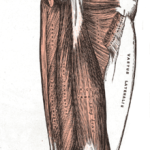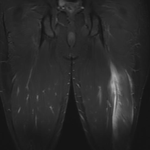Introduction
During the rehabilitation of an athlete frequently the most challenging period is during the late stage (Lorenz & Reimann, 2011). One reason for this clinical challenge is that there is a significant lack of research to suggest the most effective techniques for improving performance during late stage rehabilitation. Personally, the late stage rehabilitation of athletes is my favourite, and I am sure this is the case for many of you others. In this stage, sports physiotherapy blends with strength and conditioning to ensure that our athletes can handle the complex physical demands of sports competition.
Now, what this post will not discuss is all the ins, outs and facets for improving power. There simply is not enough time. But it will serve as a bit of a starting point. “Why?” you may ask. Well, whilst elite athletes will have Strength and Conditioning Coaches and programs that will optimise their function in the final phases of rehabilitation, the majority of athletes will not! Thus, it is up to the sports physiotherapists to ensure these athletes return to their dynamic and athletic best, and this includes not only full ROM and strength, but power and speed. Therefore, this will discuss some evidence based tips for training your athletes power and speed during late stage rehabilitation.
The majority of this article is based on a great article recently published in Sports Health. If you are involved in late or terminal stage rehabilitation of athletes I recommend you read it: Lorenz DS, Reiman MP. Performance enhancement in the terminal phases of rehabilitation. Sports Health: A Multidisciplinary Approach 2011;3(5):470-480.
Training for Power
Power = work per unit of time (force × distance/time)
Thus, as we know when training power the speed (or more accurately time) of exercise is a key factor. However, unfortunately increased speed may undermine the quality of exercise performance (Fleck, 2004). Some evidence based tips for improving power:
- To maintain form, lower loads must be utilised than traditional weight training. The 30% 1RM load level is effective for improving dynamic athletic performance (Wilson et al., 1993).
- Complex Training: involves alternating similar high-load weight training with plyometric exercises (Alves et al., 2010) and has been shown to be effective at improving power and athletic performance (Comyns et al., 2010; Santos et al., 2008) . For example: alternating between sets of heavy squats and squat jumps in the same workout.
- Contrast Training: a technique in which you contrast high and low loads for the same exercise. As an example, assume athlete’s 1RM for squats is 100kg. The athlete would perform 1 set of 6 reps with loads between 60 – 80kg, alternating with 1 set of 6 reps with loads between 30 – 50kg at maximum speed to increase power (Alves et al., 2010).
- Plyometric Training: I am certain that this is something I do not have to explain to physiotherapists. However, I did include a video below displaying some plyometric drills. Plyometric drills can be utilised within complex training programs.
- Olympic Weightlifting: olympic lifts (Snatch or Clean and Jerk) are awesome for improving power, and are the foundations of many high level/elite strength and conditioning programs. They are popular because these lifts maximize power production but also require total body coordination, strength, and balance (Lorenz & Reimann, 2011). These techniques come with caution as we all know they can be dangerous if performed incorrectly, check out the videos below.
Training for Speed
We are now discussing training for sprinting speed. Quite simply, 2 components determine how fast you run; stride length and stride frequency (Cissik, 2004; Cissik, 2005). Below are a few tips on each component:
- Stride Length: obviously stride length is going to be related to lower limb power (discussed above). However, you can encourage neural adaptations to improve stride length with the following drills: running uphill, bounding drills, or power skips.
- Stride Frequency: this is to improve the athlete’s ‘leg turnover’. Again, the adaptations gained by these drills will include both neural adaptations and also training of Type IIa and IIb (‘Fast Twitch’) Fibres. Some examples will include fast leg drills, resisted sprints (such as that with a sled/parachute), or assisted sprints (in which you have externally paced turnover).
What Are Your Thoughts?
As previously stated, this just serves as a little hint at what is involved in improving power and speed in your athletes. It is ideal when it sparks discussion amongst the community, so I would love to hear your experiences with late stage rehabilitation. Do you like it or is it your least favourite phase of rehabilitation?
Photo Credit: jontunn,
References
Alves JM, Rebelo AN, Abrantes C, Sampaio J. Short-term effects of complex and contrast training in soccer players vertical jump, sprint and agility abilities. J Strength Cond Res. 2010;24(4):936-941.
Cissik JM. Means and methods of speed training, part one. Strength Cond J. 2004;26(4):24-29.
Cissik JM. Means and methods of speed training, part two. Strength Cond J. 2005;27(1):18-25.
Comyns TM, Harrison AJ, Hennessy LK. Effect of squatting on sprinting performance and repeated exposure to complex training in male rugby players. J Strength Cond Res. 2010;24(3):610-618.
Fleck SJ, Kraemer WJ. Designing Resistance Training Programs. 3rd ed. Champaign, IL: Human Kinetics; 2004.
Lorenz DS, Reiman MP. Performance enhancement in the terminal phases of rehabilitation. Sports Health: A Multidisciplinary Approach 2011;3(5):470-480
Santos EJ, Janeira MA. Effects of complex training on explosive strength in adolescent male basketball players. J Strength Cond Res. 2008;22(3):903-909.
Wilson GJ, Newton RU, Murphy AJ, Humphries BJ. The optimal training load for the development of athletic performance. Med Sci Sports Exerc. 1993;25:1279-1286.
Related Posts








